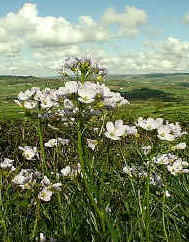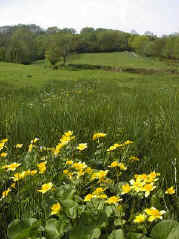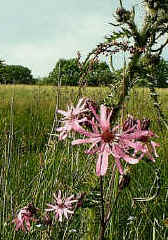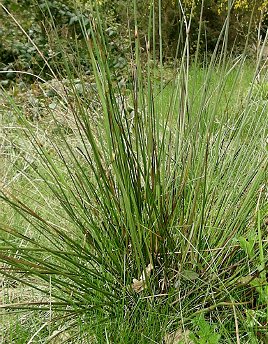MEADOWS
Plants of Wet, or Water Meadows
 |
 |
 |
 |
Lady's-smock |
Marsh Marigold |
Bugle |
Ragged Robin |
There may be a great deal of overlap, between the grass species found in hay and water meadows. The exact species mix will depend on such factors as how often the meadow is flooded and for how long, together with the degree of saturation of the soil at other times of the year. Cocksfoot (Dactylis glomerata), Timothy (Phleum pratense), Sweet Vernal-grass (Anthoxanthum odoratum) and Crested Dog's-tail (Cynosurus cristatus) may all be present, together with species such as Meadow Foxtail (Alopecurus pratensis), Yorkshire Fog (Holcus lanatus), Meadow Fescue (Festuca pratensis) and Tufted Hair-grass (Deschampsia caespitosa). In very wet areas, Purple Moor-grass (Molinia caerulea) may be dominant. This grass has little agricultural value as it is only palatable to sheep and cattle when young. It can become a problem as it will tend to dominate the habitat to the detriment of other more palatable species, also reducing species diversity overall.
|
||
| Continue to:- Meadow Animals |
